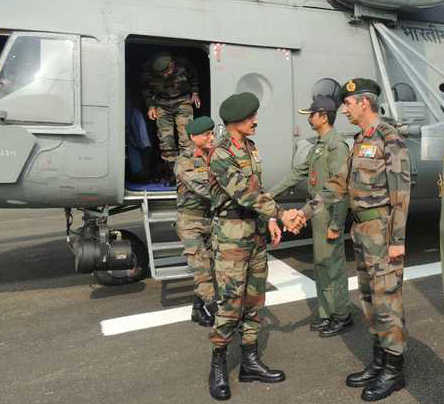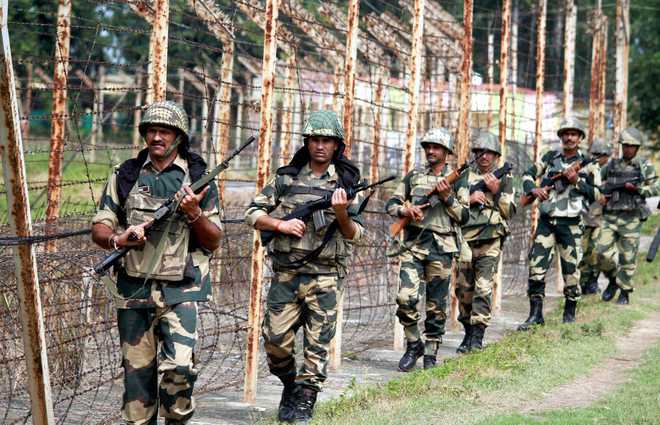The temporary coagulation of political unity soon after the Indian army conducted surgical strikes in Pakistan has fractured. The two sides of the political coin are now locked in a sterile debate over the existence of the videos of the army’s strikes. This is symptomatic of the political leadership mixing up the means with the ends. The continuing slugfest over releasing the tapes hardly promises what the social media and ruling party politicians have primed the citizenry to expect — a teeth-grinding fight to the finish with Pakistan over terrorism. An alternative narrative suggests that the four-hour operation has chastened Pakistan into dumping terrorism as a geopolitical tool.Pakistan withstood 15 years of American diplomatic pressure and drone killings of top Taliban leaders. And now Kabul has been forced to accommodate the “butcher of Kabul” and ISI asset Gulbuddin Hekmatyar. Mercifully, the attack on the army camp in Baramula was unsuccessful. What if militants strike again with a large body count as in Uri? A repeat of the cross-border raid is ruled out. The only option for the government to hang on to its aura of machismo and sustain public expectations may be a full-blown war. Are we ready to pay the ensuing consequences of domestic economic distress and international isolation? Talking of war, there are lakhs of inconvenienced civilians on Pakistan’s border with Punjab and J&K. The political accord between the Akali Dal, the Congress and AAP has dissipated amidst questioning about the purpose of their dislocation. Having taken a leap in the unknown, the onus is on the Modi Government to land on its feet. For this, the government needs an alternative plan to retain public support. If the Modi government opts for talks, it would begin to look like a soaped-up version of the Manmohan Singh government. The only difference was the UPA undertook covert cross-border forays that set the stage for dialogue while this government banks on over-the-top media exposure. Meanwhile, the nation stands diverted while both sides succumb to the lure of extracting political mileage.


















































































































Top Comment
USA military wears $20000 gear. Indian $20 how can they learn from him. Upgrade Indian soldiers kit. Make them light and lethal. thats the only way. reduce corruption and bureaucracy from army,nave, … NEW DELHI: India and the US are planning to go in for a major upgrade of theirbilateral combat exercises after inking the military logistics pact+ last month in tune with their “joint strategic vision” for the Asia Pacific and the Indian Ocean Region.
Defence ministry sources say the aim is to “further increase the scope and complexity” of bilateral military exercises and engagements “across the board”, which will now be facilitated by the Logistics Exchange Memorandum of Agreement (LEMOA) inked during defence minister Manohar Parrikar‘s visit to the US on August 29-30.
India, of course, is willing to further tighten the strategic clinch with the US, which has already bagged Indian defence contracts+ worth $15 billion just since 2007. But New Delhi remains reluctant to join any formal tri-lateral or quadrilateral security axis to counter China in the Asia Pacific or act as a “linchpin” in the ongoing “re-balance” of US military forces to the region.
“But we can learn a lot from the high-tech US armed forces in the exercises, ranging from complex mission planning and execution to operating in an increasingly digitised warfare environment. Conversely, they can learn from our battle and insurgency-hardened forces. LEMOA will further boost the interoperability,” said an official.
After the upgrade in the annual top-notch Malabar naval war-games+ between India and the US, with Japan becoming a regular participant, for instance, the two countries are now kicking-off Navy-to-Navy discussions on anti-submarine warfare and submarine safety as well as a maritime security dialogue. Navy chief Admiral Sunil Lanba, incidentally, is currently in the US for a sea power symposium.
On the land combat front, the plan is to “evolve” the Yudh Abhyas exercise into “a more complex, combined arms, divisional-level exercise”. The 12th edition of Yudh Abhyas is currently underway at Chaubatia in Uttarakhand, with over 225 troops from each side honing their combat skills, as was earlier reported by TOI.
While infantry soldiers and Stryker combat teams from Fort Louis in the US are taking part in the exercise, India has fielded troops from the 12 Madras Regiment. Though the main focus is on counter-terrorism drills involving “a combined deployment at a brigade-level”, deliberations are also slated on “air-ground integration, combined arms maneuver and targeting processes”.
Similarly, the IAF is also going to step up its engagement with the USAF after taking part in the iconic Red Flag exercise at Alaska in April-May with eight Sukhoi-30MKI and Jaguar fighters, two IL-78 mid-air refuellers and two C-17 Globemaster-III strategic-lift aircraft.